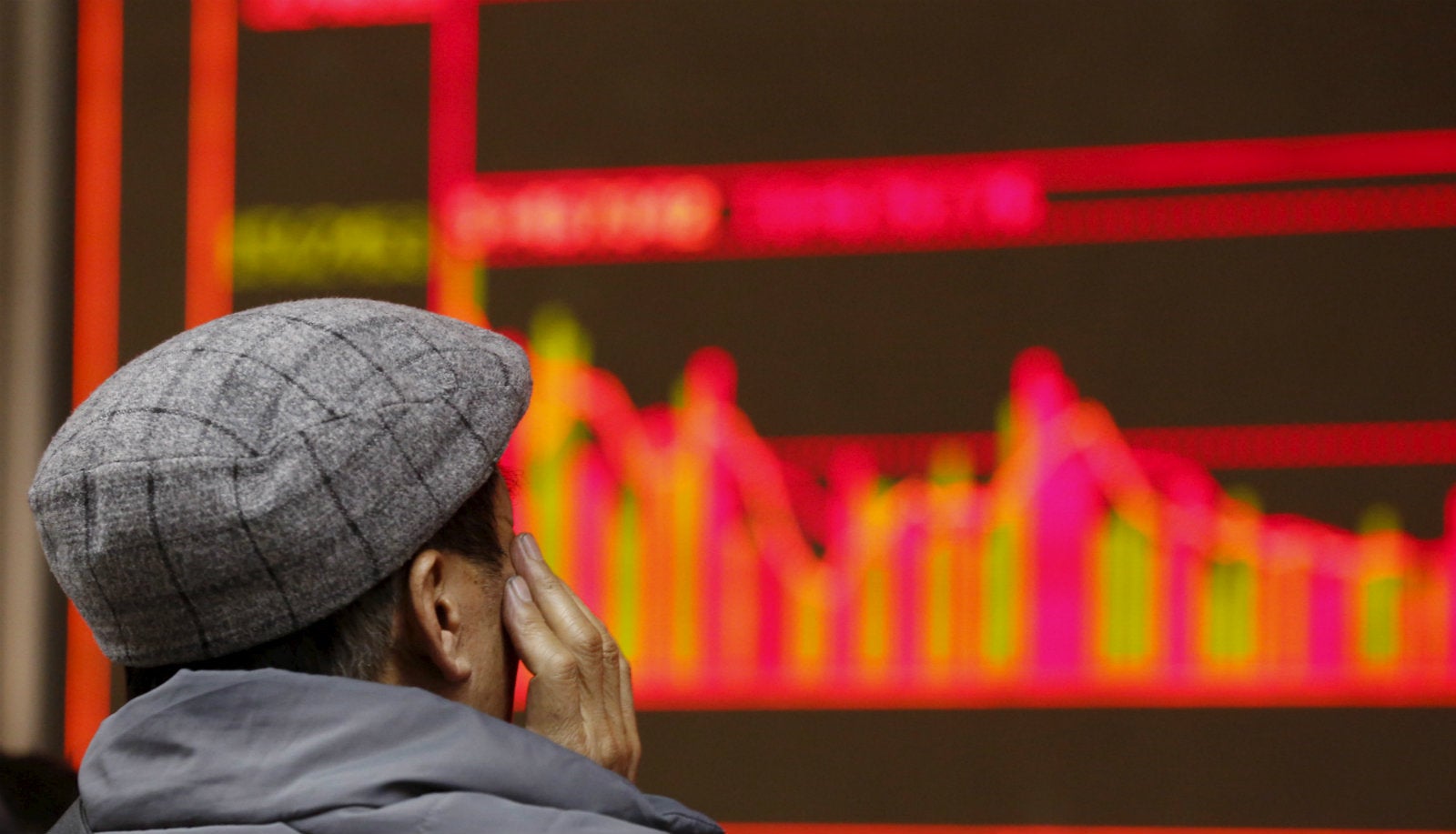Keep calm and invest in China, says the head of Southeast Asia’s biggest bank
To many, the start of 2016 portends an annus horribilis. The carnage in China’s stock markets last week, sparked by downbeat manufacturing data, rattled stocks from the US to Europe. The depreciating yuan is also unnerving investors.


To many, the start of 2016 portends an annus horribilis. The carnage in China’s stock markets last week, sparked by downbeat manufacturing data, rattled stocks from the US to Europe. The depreciating yuan is also unnerving investors.
Are the Chinese authorities losing their grip on the China economy, and is the world’s second-largest economy coming off the rails? Notwithstanding the market rout in China, I do not believe China is falling off a cliff.
Last Monday (Jan. 11), China’s purchasing managers’ index (PMI) data spooked everyone, staying under 50—signifying contraction—for the fifth month in a row. However, given what China seeks to accomplish, PMI is the wrong metric to look at, for one important reason: the contraction in industry and manufacturing is being engineered by the Chinese. This is part of a calibrated policy outcome. For five years, the world told the Chinese they were over-invested and needed to scale back on overcapacity and manufacturing. There was clamour for China to shift to a consumption economy. And for the last two years, the Chinese have been focused on trying to do just that. So it should come as no surprise that China’s PMI should come in at below 50, and why I think focusing on this metric is not sensible.
The reality is: one, China’s service sector is growing quite nicely (PMI at over 54 in the same period) and two, the slowdown in manufacturing/investment reflects a need to clean up excess capacity in several sectors, notably construction, steel etc. But this does not mean China’s heydays as an investment destination are over. Its big problem has been a misallocation of resources, and it will need more than a couple of years to address the problems arising from this. Nevertheless, it is instructive to note that, overall, China’s actual investment (capital-output ratio, capital-labour ratio) is a fraction of the US. There are large parts of China’s economy, including health care, services and environmental sectors, that are massively underinvested. What this means is there is scope and capacity for China to pump-prime the economy, and it has done so with some measure of success: while the PMI data is below 50, this has been inching up in the last couple of months.
A lot of people accuse me sometimes of being a China bull and overly sanguine about the risk in the country. However, I want to differentiate my view of the macroeconomy from my view of China risks. The two are not the same thing. China risks are real, but they are concentrated in two areas:
1. Financial market volatility due to China’s attempt to open up
China’s authorities are focused on financial sector liberalisation, and the pace at which this has taken place has been faster than expected. For example, the Stock Connect was introduced, quotas on QFII (qualified foreign institutional investors) were relaxed, and ceilings on deposit rates removed, all in the last 15 months. The free flow of markets has impacted many of China’s asset classes. It is a truism that when you start to drive financial sector market liberalisation reform, there will be volatility.
This is compounded by the fact that while China is attempting to open up, it is also seeking to fine-tune market responses through policy actions. And these policy decisions are taken by myriad people, regulators, and government agencies. Many think China is one person: that Xi Jinping takes all decisions. That would be impossible in a nation of 1.3 billion people. In reality, the central authority in Beijing, the People’s Bank of China, China Securities Regulatory Commission, China Banking Regulatory Commission etc., have different agendas. Different people march to different tunes. While policies are broadly orchestrated, not everything is carefully calibrated each time. One may, therefore, find oneself on the wrong side of policy responses.
2. Anti-corruption drive, reform of state-owned enterprises, and depreciating yuan will put pressure on many companies
China is cracking down on corruption, and this drive could create risks for firms related to affected individuals, creating idiosyncratic counter-party risks. China is also pursuing reforms of state-owned enterprises, which means less competitive companies will be weaned out.
To top this off, I believe the yuan’s depreciation will likely result in a good number of corporate defaults. In fact, I daresay, currency depreciation is perhaps the single biggest risk to focus on this year.
While the yuan has been falling, China will continue to let its currency depreciate as exports are proving to be a drag. It does have a massive export trade surplus of $160 billion a quarter, although that is coming down. It will, therefore, have a bias towards letting its currency depreciate against the dollar—even if this is held steady relative to the basket. This is a risk to watch out for because there has been a lot of Chinese corporate borrowing, much of it dollar-denominated, in the last year or two. A lot of this is unhedged. As the yuan depreciates, a significant number of Chinese corporates may find their capacity to service debts challenged. This would be reminiscent of what Southeast Asia saw in 1998.
All in, China has risks, and clearly real ones at that. However, I do not believe China’s macro-economy is the point of concern. The economy is growing at 6-7%, and will continue at this pace. What is more worrying is that the year will be marked by significant market volatility, more corporate defaults and higher counter-party risk. Nevertheless, if one is smart, understands the long game and chooses opportunities wisely, I believe China is still a good place to invest in.
This post first appeared on LinkedIn. We welcome your comments at [email protected].